Heart shaped plants: 10 Best plants to offer in valentine’s day
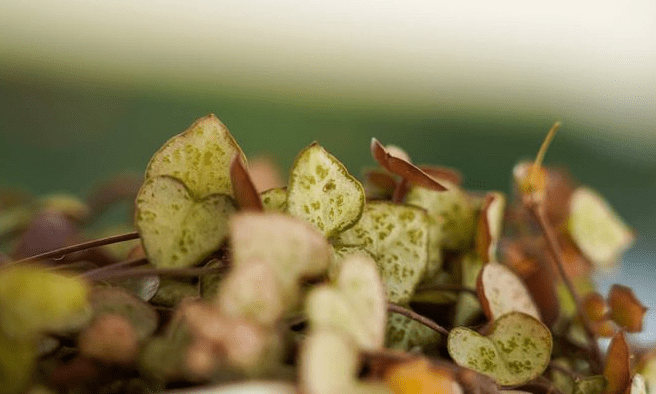
Choose a special gift
Heart shaped plants: Valentine’s Day is approaching and it’s always nice to give something special to your loved ones, a house plant with heart shaped leaves, for example, it will be a great idea!
When you send a heart flower or roses for Valentine’s Day, you know in advance that even with the best care, they won’t last longer than a week. This is not the case with the plants that you will find in this article. They are attractive, easy to care for and suitable for the event since they look like a heart. So, lets discover these heart shaped plants together!
Heart shaped plants for the Valentine’s day
1- Sweetheart Hoya
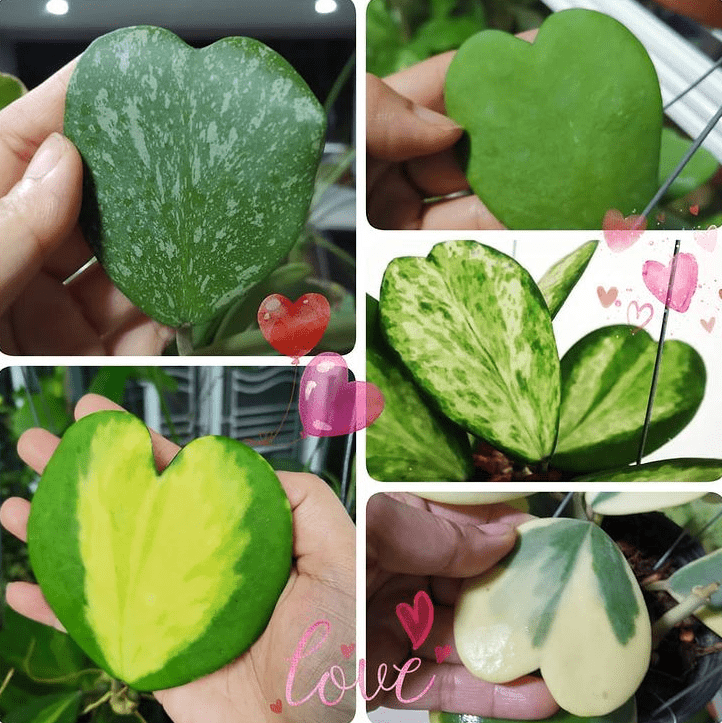
Hoya kerrii, named also sweetheart Hoya or Valentine plant, is a succulent climbing vine native to Southeast Asia. This irresistible succulent heart is usually marketed as a single-rooted fleshy, heart-shaped leaf, without a stem. Although this still Hoya heart is relatively slow-growing. It appreciates a hanging basket, where it eventually becomes a bushy mass of green hearts. Like all Hoyas, clusters of star-shaped flowers, which produce abundant nectar, will eventually emerge along the stems.
2- String of hearts
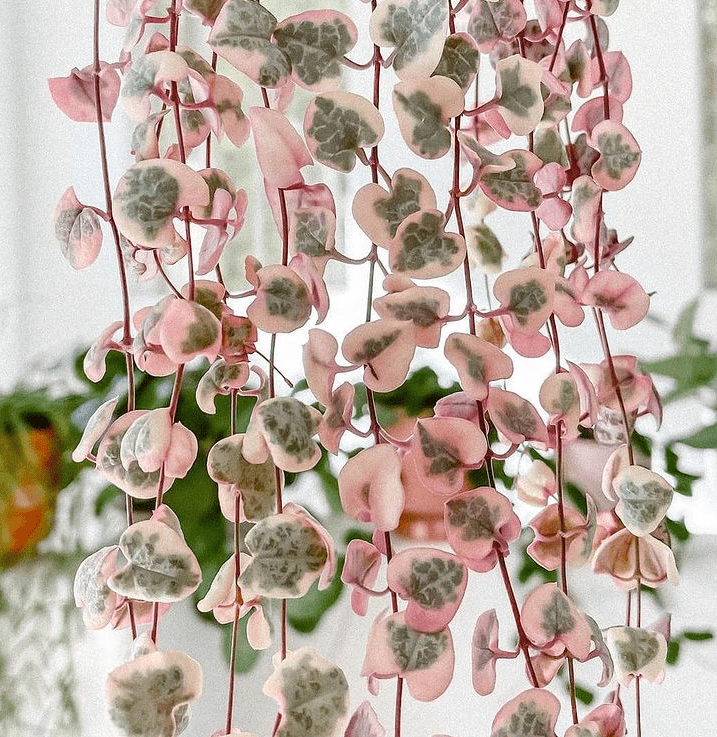
Ceropegia woodii, also called “String of hearts”, is the star of plants. It is a perennial plant native to South Africa belonging to the Asclepiadaceae family. These heart plants are ideal to give as a gift on special occasions because of their wonderful heart-shaped leaves. This tuberous plant has long trailing stems bearing small pale to dark green leaves. Moreover, tubular, pink flowers appear in late summer to early fall and last up to 6 weeks. String of Hearts is an easy to care for plant, just give it bright light (but indirect light) and full sun at least 3 hours a day. Watering every 10 days should suffice during the growing season. In autumn, gradually reduce the frequency of watering.
3- Epipremnum aureum
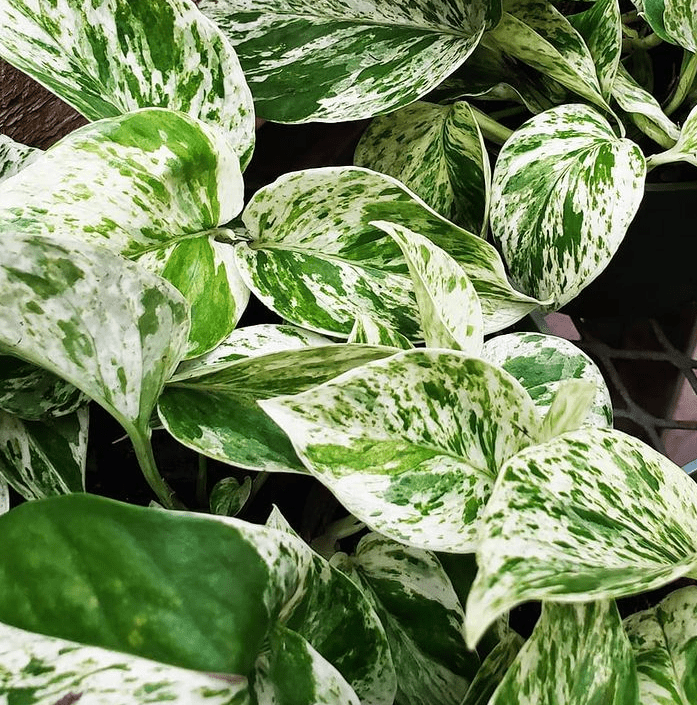
Epipremnum aureum has as common names “Golden Pothos” or “Devil’s Ivy” and it’s a very easy to grow plant adaptable to most conditions. This perennial evergreen plant has glossy, heart-shaped, green or variegated leaves carried by long, cascading stems.
The characteristic of Golden Pothos is that it is most tolerant and adaptable to lower light conditions, which make it a suitable plant for any piece of your interior. Plus, Golden Pothos even works to purify the air inside your home, absorbing and removing certain chemicals and toxins.
4- Syngonium podophyllum
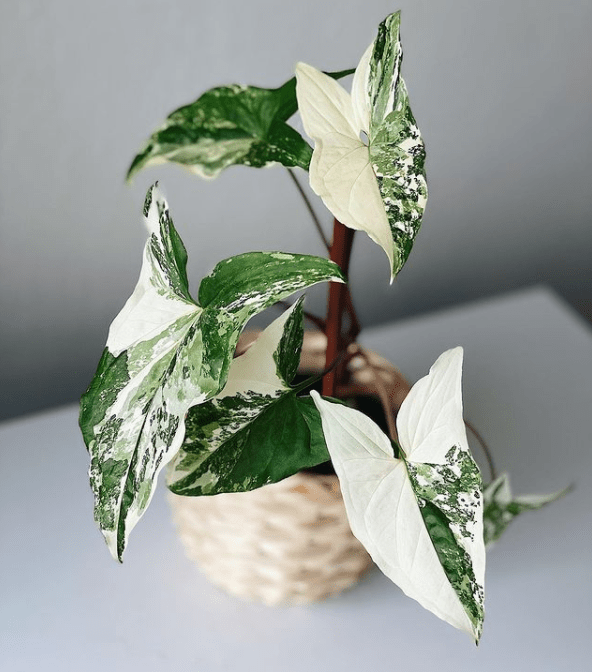
Syngonium podophyllum, known also as Arrowhead Plant, Five Fingers, or Nephthytis, is a tropical, perennial climber plant that can reach 2m tall. The plant’s leaves structure changes as it matures, going from large, arrow-shaped leaves veined and suffused with silvery-white to deeply lobed or divided mature leaves. This plant is actually really easy to look after as it’s a low light tolerant houseplant and will grow virtually anywhere in your home. Add it to your wishlist of plants for hanging baskets.
5- Philodendron gloriosum
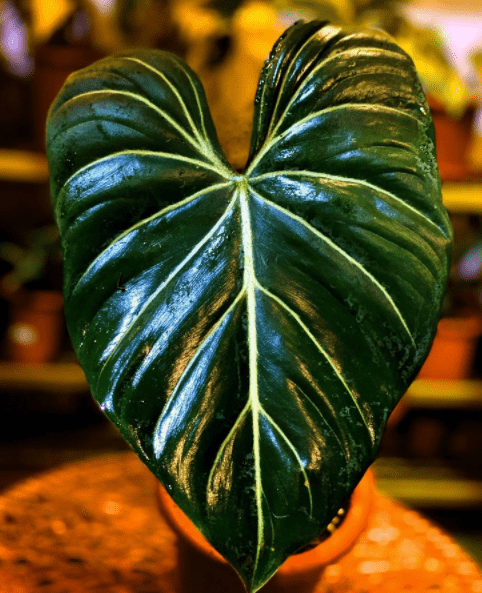
Large heart shaped plants. Philodendron gloriosum, is a creeper evergreen plant native to Colombia and other tropical parts of the world. This wonderful species sports velvety, green, heart-shaped leaves with cream coloured contrasting vines. The leaves reach up to 90 cm in the wild while the stem remains Underground. Furthermore, a mature Gloriosum produces white flowers around every May to July.
6- Conophytum bilobum
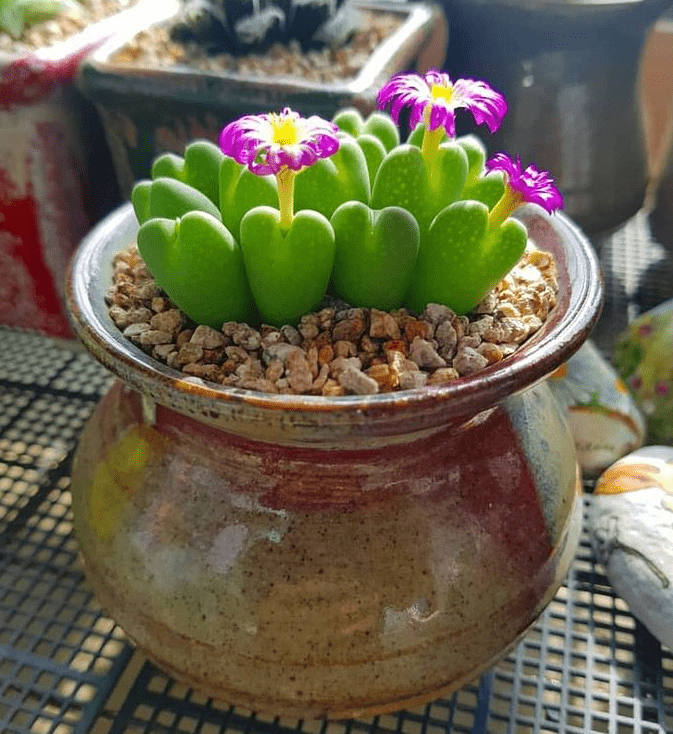
Cute heart shaped plants. Conophytum bilobum, named also living pebble, is a perennial succulent of the Aizoaceae family. This small, stemless heart plant native to South Africa has paired, smooth, pale green leaves that form a heart shape. the margins and tops of the lobes are green and often with a reddish or deep purple line. Diurnal, large, bright yellow flowers are produced in autumn.
7- Kalanchoe Thyrsiflora
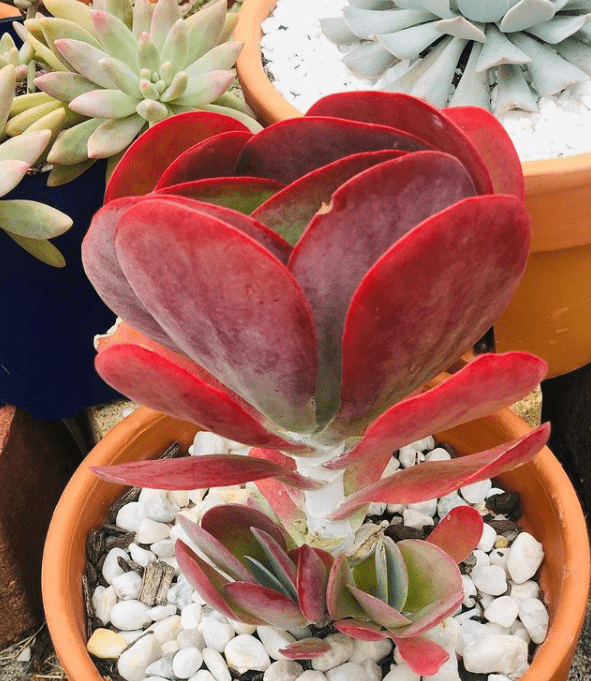
Kalanchoe Thyrsiflora, named commonly paddle plant or white lady, is a flowering succulent native to Botswana, Lesotho, South Africa and Swaziland. This ornamental plant forms a basal rosette of flat, rounded, grey-green leaves with red margins and white powdery bloom. Mature plants produce a spike of fragrant, yellow flowers in spring.
8- Cyclamen persicum
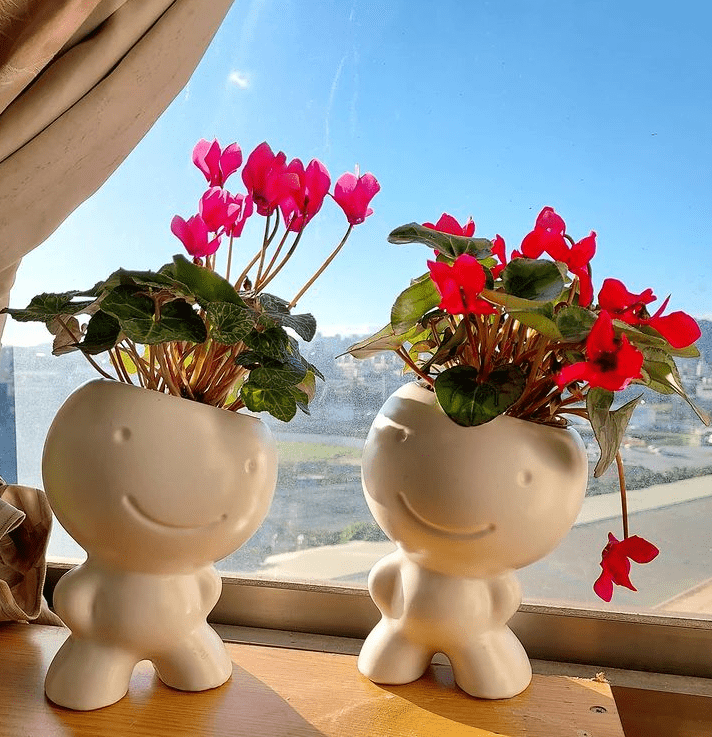
Cyclamen persicum, named also Persian violet, is a small flowering plant of the Primulaceae family. This tuberous perennial is characterized by heart-shaped, dark-green leaves with silver markings. From autumn to late spring Cyclamen produces fragrant white, pink or deep carmine flowers with a darker pink, magenta or purple mouth that appear atop a leafless stem.
9- Alocasia zebrina
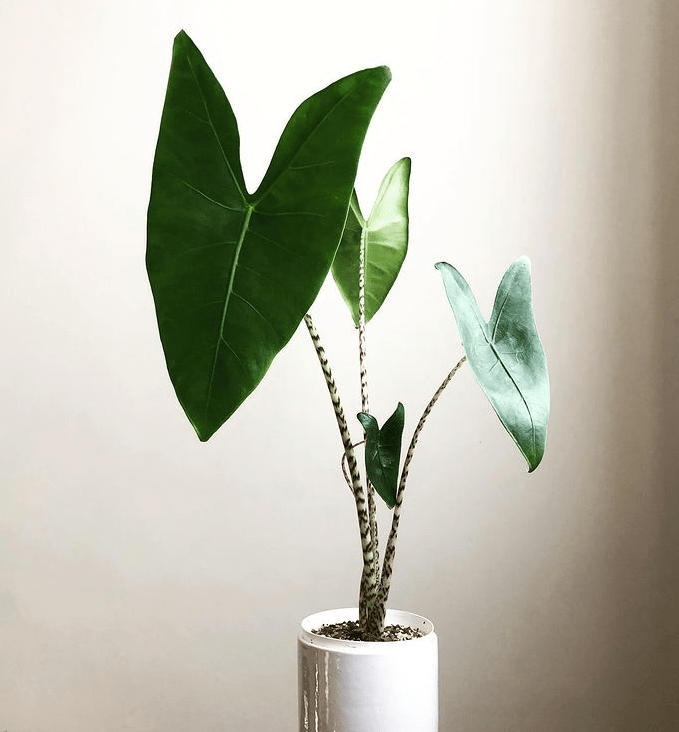
Alocasia zebrina is also among the best heart shaped plants. It is a rhizomatous tropical perennial of the arum family found in the wild in Brazil, where it grows at the base of much larger trees. This eye-catching, sculptural houseplant has its name from its zebra-striped stems which are truly unique. Not only the stems which are unique but also the large, glossy, elephant ear-shaped, deep green leaves. Alocasia zebrina is not the easiest houseplant to manage, but it will flourishes indoors with the right conditions.
10- Hemionitis Arifolia
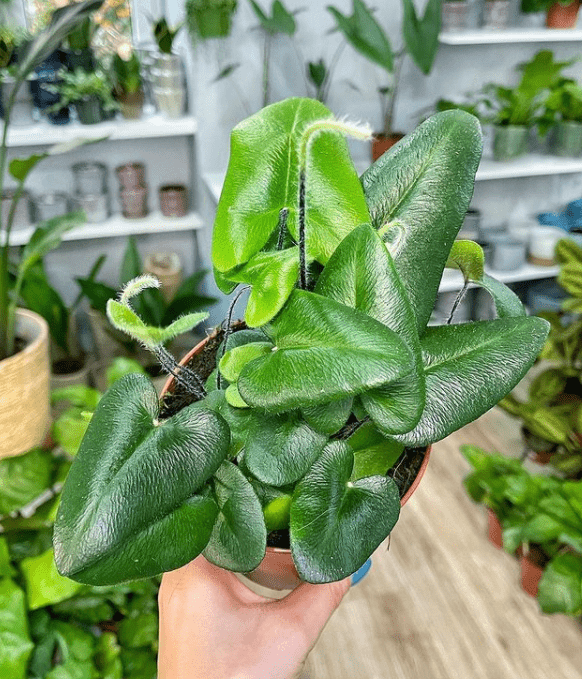
Hemionitis Arifolia, called commonly Heart Leaf Fern, is a species of fern in the Pteridaceae family. The shiny, deep green leaves of this fern grow in perfectly heart-shaped patterns, earning it its common name. Moreover, the dwarf growth habit of these heart shaped plants makes them great houseplants and a perfect choice for small spaces. This fern favours being grown in a very humid environment, where the fern will receive filtered, diffused light.
Did you find this helpful? Share it with your friends!